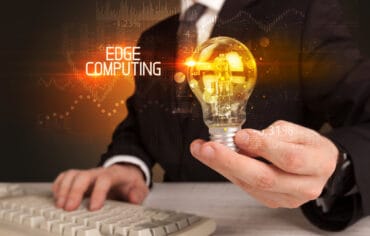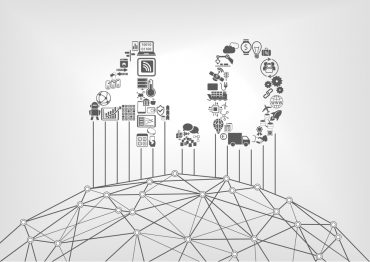
5G and edge computing used together are already delivering business capabilities in use cases across a broad range of industries.
When evaluating the most productive technologies over the coming years and months, two technology initiatives stand out: 5G networks and edge computing. Leading industry speakers explored the power and potential of these technologies at the recent Six Five Summit, hosted by Futurum and Moor.
“Our customers are telling us 5G automation and extracting real-time insights from data at the edge are major investment areas,” said Allison Dew, chief marketing officer and executive VP at Dell Technologies. She advised organizations “to elevate your systems and processes to be ready for what’s next. You need relevant, complete, and real-time data to win and retain customers, streamline supply chains, and grow. This applies to expected and unexpected events alike, ranging from predictable busy seasons to deploying new technology, or even moving your workforce remote over a weekend as we did in March of 2020.”
See also: As 5G and Business Savvy Mix, Edge Innovation Thrives
Edge and 5G will serve organizations through the current situation and future disruptions. “5G and edge are tightly linked one to each other,” according to Cédric Bourrely, director, Capgemini Invent and 5G Labs program lead at Capgemini, who also spoke at the event. “5G is the first generation of mobile communication that is designed for the industries. Previous generations were dedicated to the mass public, and now we are really moving on the industrial side of it. 5G technology is meant for industries, for smart cities, for smart factories. It’s truly a differentiator.”
Edge and 5G-enabled computing are already delivering business capabilities, the conference speakers agreed. “Over the last few months, 18 months, we’ve seen a lot of pilots and proof of concept coming along,” says Charles Ferland, VP and GM of edge computing and communication service providers at Lenovo. “It is becoming real because now we’re starting to see shipments and projects that are in the hundreds, if not thousands of devices all over the world.”
Emerging applications for 5G and edge include autonomous vehicles that can be tightly integrated with wider corporate operations. “We have developed typically an autonomous intelligent vehicle, AIV, which computes the calculation, picking up a package inside the warehouse at the edge,” says Bourrely. “And not only at the device site, taking all the benefit from high power from edge side and cloud side with very less reactivity. It’s powered by a 5G network.”
Another area is healthcare, in which 5G-powered edge technologies “will bring for the assistance to the patient, for the augmented operating room, for everything linked to the mobility connectivity for patients transiting from home to hospitals, from taking care of patients with imagery.”
Watch Now: What is the Edge and Why Do We Care About it So Much?There are many compelling cases to be made for 5G-powered edge computing, Bourrely continues. “Today, the number of data that is being processed is exponentially growing. You need to get power computing power very close to the network, and you need to get also limitations on the bandwidth that you will use, both for latency or real-time quantities or even sustainability conditions. So it’s really a link very deep between 5G and edge. We see this convergence between the IT world, the OT world, and the network world.
A successful 5G-driven edge strategy doesn’t occur in a vacuum; it requires collaboration across the enterprise. “This is essentially the next evolution of flexible work, enabled by cloud-based service model, aligned to the business outcomes we need to drive,” Dew says. “A strong technology foundation with established processes and tools that speed up iterations, create efficiencies, and drive compliance is critical. We are building on this foundation as we transition to as a service. It’s also important to have teams of people dedicated to understanding and solving for each opportunity, versus just focused on the technical issue. Whatever your digital transformation strategy is, real improvements come from collaboration between business owners and the technical teams.”
The events of the past year taught business leaders that in order for their industries to be resilient, “constant and direct access to the data and the control of the processes are completely mandatory,” says Bourrely. “We have seen that in supply chain, we have seen that in hospitals. Working remotely can only be done through complete control of the data. And that is made possible by intelligent algorithms, that we need to execute real-time close to the location of the production of the data, close to the device. So it means new means, new architectures, new hardware, new software, and obviously new connectivity. 5G and edge are really now the proof that it can help, and in the future crisis, it will be more resilient thanks to this progress.”
Looking ahead, “we are presented with an exciting opportunity to re-imagine what is possible,” says Dew. “5G automation and real-time insights from data at the edge are going mainstream. New as-a-service models offer better IT flexibility, agility, and control to rapidly meet changing business needs. Technology is at the center of new ways of working that in our experience makes for a more inclusive, productive, and happy workforce.”







